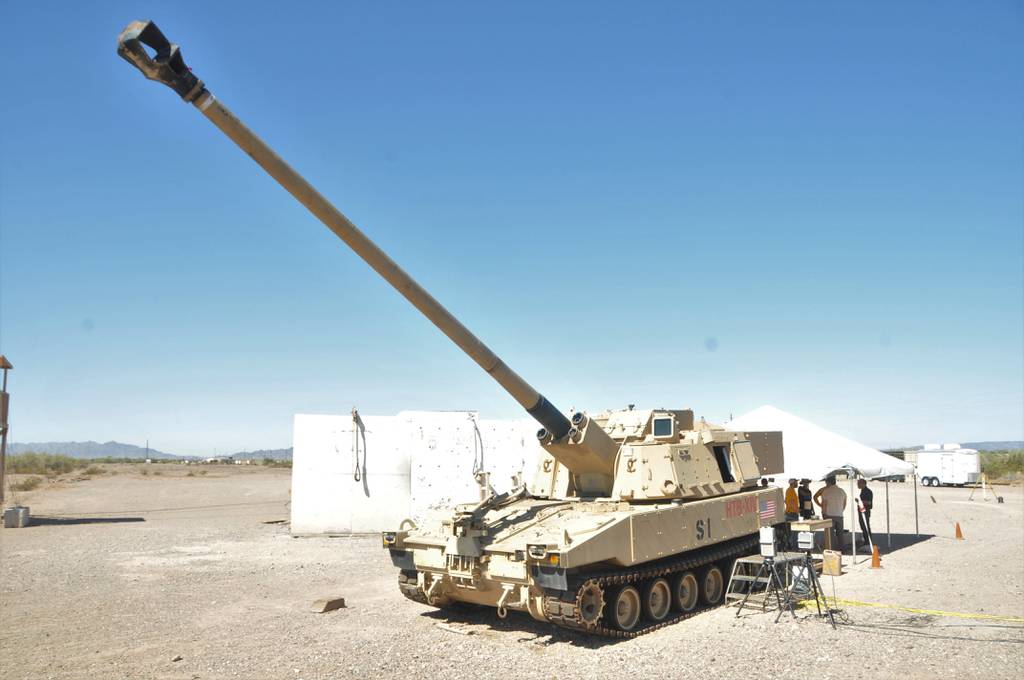
The U.S. Army is changing its approach to acquiring a long-range artillery capability and scrapping its 58-caliber Extended Range Cannon Artillery prototyping effort, according to the service’s acquisition chief.
“We concluded the prototyping activity last fall,” Doug Bush told reporters at a March 8 briefing on the fiscal 2025 budget request. “Unfortunately, [it was] not successful enough to go straight into production.”
The new plan — following an “exhaustive” tactical fires study meant to revalidate elements of the extended-range cannon requirement led by Army Futures Command — is to evaluate existing options from industry this summer “to get a sense of the maturity of those systems.”
Of the 24 new Army systems slated to make it into the hands of soldiers by the end of 2023, only the Extended Range Cannon Artillery program missed that goal. The ERCA system uses a service-developed, 58-caliber gun tube mounted on the chassis of a BAE Systems-made Paladin Integrated Management howitzer.
The Army was building 20 prototypes of the ERCA system: two for destructive testing and the remaining 18 for a battalion.
The operational evaluation of ERCA revealed “engineering challenges,” Bush said a year ago. Observations in early testing of prototypes showed excessive wear on the gun tube after firing a relatively low number of rounds.
RELATED
:quality(70)/cloudfront-us-east-1.images.arcpublishing.com/archetype/UJPRVFVICFGKTPDB6Y6FL4HU2A.jpg)
Army Futures Command leader Gen. James Rainey told Defense News last summer the service was working on a new conventional fires strategy expected by the end of the calendar year. The strategy would determine both capability and capacity of what exists and what the Army may need, Rainey said.
The strategy considered new technology to enhance conventional fires on the battlefield, such as advances in propellant that make it possible for midrange cannons to shoot as far as longer-range systems.
Depending on the artillery strategy’s conclusions, there are a variety of options the service could consider in order to fulfill the Army’s requirement for an extended-range cannon, Bush said.
The Army was able to conduct a variety of successful tests with ERCA prototypes, including hitting a target on the nose 70 kilometers (43 miles) away at Yuma Proving Ground, Arizona, in December 2020 using an Excalibur extended-range guided artillery shell.
The problems with the cannon were mostly related to the length of the gun tube and its ability to withstand a large number of projectiles without excessive wear to the gun tube.
The Army is racing to extend artillery ranges on the battlefield to take away advantages of high-end adversaries like Russia and China. The ERCA weapon was intended to be able to fire at and destroy targets from a position out of the range of enemy systems.
That requirement remains, Bush stressed last week.
The hope now is to find systems that currently exist and are capable. The Army would then choose one for production if it proves promising, Bush said.
“There [are] things people say, and then we need to actually do testing to make sure it’s true,” he explained.
“It’s a shift from developing something new to working with what is available both domestically and internationally to get the range,” he added, “because the fires study validated the range and volume are still needed, so we want to find a different way to get there.”
The Army is asking for $55 million in its FY25 budget to pursue the new effort to find an extended-range cannon capability.
The service also plans to continue developing new munitions it was already working on as part of the ERCA program, Bush noted.
Author: Jen Judson
Source: DefenseNews



